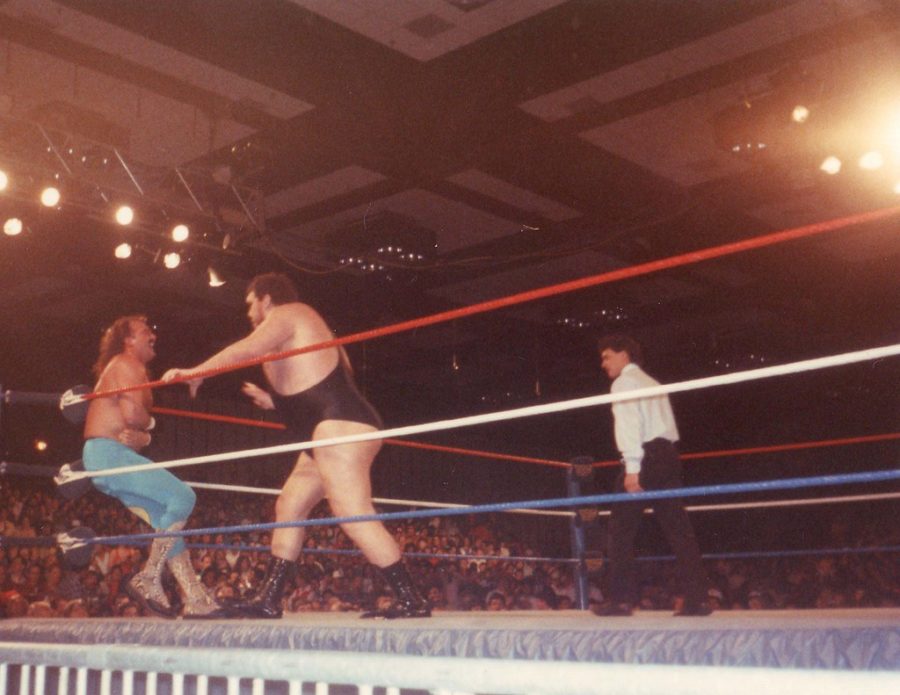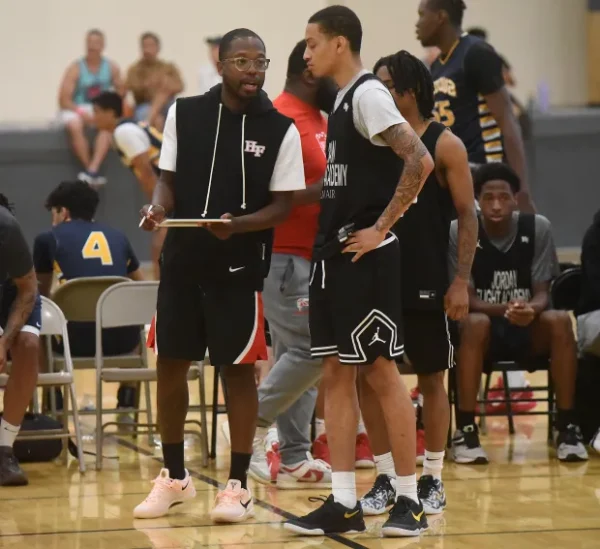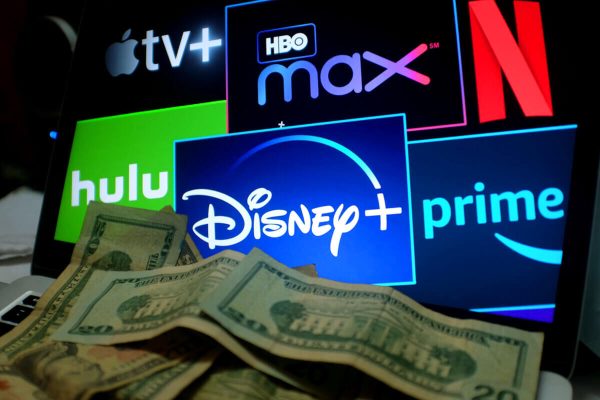Wrestling’s Generational Impact
Photo by noticeofmeowery, Creative Commons
Andre the Giant vs. Jake ‘the Snake’ Roberts at WWF Wrestlemania V in 1989.
Since the adaptation of televised sporting events, children and adults alike have essentially grown up with easily accessible sports entertainment right in front of their eyes.
While baseball, basketball, football and hockey strictly dominated screens from the start of cable television, in the late 30s and early 40s, all the way to the late 70s, an exciting development occurred that would change the sports entertainment industry forever – the creation of the World Wrestling Federation.
With the creation and rising popularity of the WWF in 1979, marked the start of the “1980s wrestling boom.”
But how did the WWF get so popular out of nowhere? In 1973, under the name World Wide Wrestling Federation, the company signed a man who would make headlines in both Hollywood and in the ring. This man was none other than Andre the Giant.
Wrestling fans and outside viewers immediately gravitated to the Giant’s lovable personality which was almost contradictory to his unhuman-like size as he stood 6’9 and weighed nearly 520 pounds.
This gentle giant was the star of the company throughout the 80s, and until his death in 1993 when Hulk Hogan, who joined the company in 1983, took over as the top guy of the WWF.
Hogan’s loud and straightforward persona led fans and viewers to deem his every performance as “Hulkamania.” The growing popularity of Hulk Hogan and Andre the Giant in the 80s paved the way for the creation of “The Greatest Spectacle in Sports Entertainment” in 1985 – Wrestlemania.
Wrestlemania I was the first of its kind. Not only was the inaugural Wrestlemania the first-ever professional wrestling pay-per-view, but it was also performed in front of nearly 20,000 people at the “World’s Most Famous Arena,” Madison Square Garden.
The main event featured Hulk Hogan and Mr. T, who is mainly known for his acting career. The night was ultimately a success and led to 37 straight years of Wrestlemania, with Wrestlemania 38 most recently happening on April 2 and 3 of this year.
Since the mid-80s wrestling has exploded into mainstream popularity. According to 2xzone, from 1986 to 1990 there were over 6,164,000 purchases across all WWF pay-per-view events.
With wrestling’s popularity continuing into the 90s, the WWF rebranded to the WWE in 2002. Professional wrestling reached an even bigger audience, especially with new matches being televised every Monday and Friday.
Iconic and polarizing wrestlers like The Undertaker, Triple H and Rey Mysterio gravitated fans of all ages to professional wrestling throughout the early 2000s.
Wrestling has also allowed athletes like Dwayne “The Rock” Johnson and John Cena to single-handedly get their start in sports entertainment before transitioning to the big screen.
In 2022, after wrestlers from the golden age (80s, 90s and 2000s) are no longer wrestling the WWE is just not the same.
As a kid, the bright colors, vibrant personalities and constant action was a breath of fresh air compared to other professional sports. Even though professional wrestling is scripted, it has created round-the-clock entertainment for viewers of all ages.
The unpredictability of wrestling creates a gateway between reality and fantasy which adds to the entertainment value of the “sport”.
Even though wrestling may not bring the same excitement as it did as a child, it will live in the memory of adults and children who got the chance to tune in during the 80s, 90s and early 2000s.






